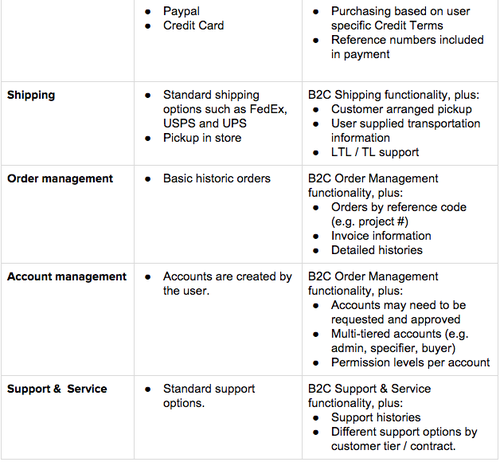Building successful e-commerce businesses (and their associated sites) is complex. As with any business, the model must be fully thought through. This is especially true when building out a B2B e-commerce business. You can’t just paint a B2C e-commerce site and expect it to work for B2B e-commerce. While there are a lot of commonalities, there are also a lot of differences.
From a user experience standpoint, business customers expect the same easy experience that they get in their personal use of e-commerce sites…..with the additional complexity of B2B e-commerce’s unique requirements seamlessly accommodated. In addition to standard B2C e-commerce functionality (hey, everybody wants a good user experience), B2B buyers expect tools that fit into their purchasing process, detailed product information, and B2B specific functionality.
When you think of B2C e-commerce, the model is pretty simple. It is businesses selling to consumers. Using the term e-commerce in the B2B world is not as simple. There are a lot of different B2B e-commerce models. There are manufacturers selling to distributors, distributors selling to businesses, and businesses selling to other businesses. All of them are businesses, but the unique requirements are often different.
In general, the following table outlines some of the main differences between B2C and B2B e-commerce based on key e-commerce site functional areas.


Although B2B e-commerce is different from B2C e-commerce, many of the core components stay the same. You need to understand your customer’s purchasing requirements, provide a competitive product at a competitive price, and delight your customer at each point in the buying cycle. Yes, the details are different, but the fundamentals are the same.
The Bottom Line
B2B e-commerce sites must meet the expectations of users that are familiar with B2C e-commerce, while supporting B2B complexity. Need help developing your B2B e-commerce strategy and then implementing it? Let’s chat.


